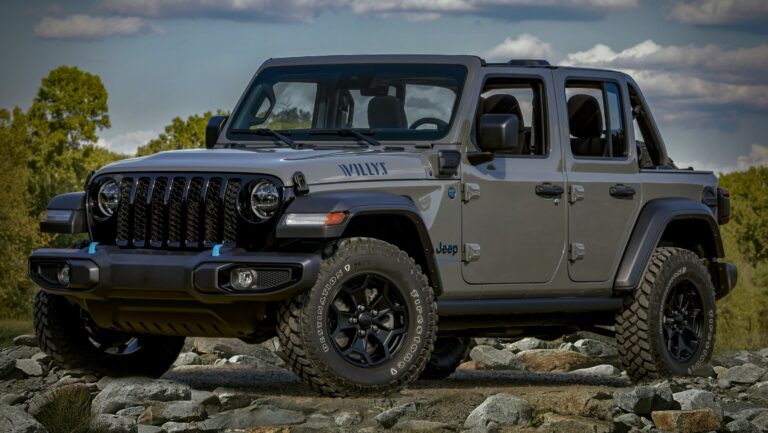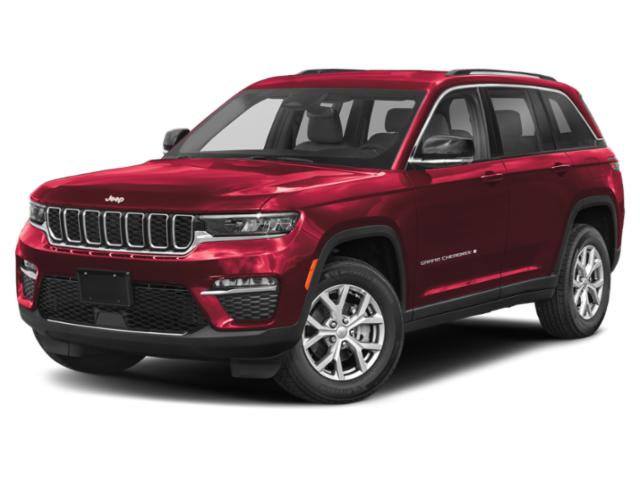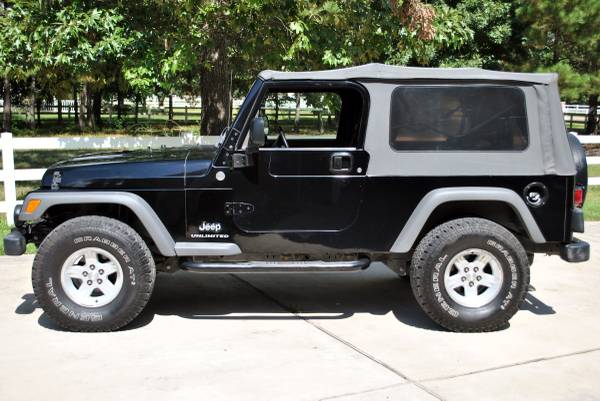Jeep Liberty CRD Engine For Sale: A Comprehensive Buyer’s Guide
Jeep Liberty CRD Engine For Sale: A Comprehensive Buyer’s Guide /jeeps.truckstrend.com
The Jeep Liberty, particularly the 2005-2006 Common Rail Diesel (CRD) variant, holds a unique place in the hearts of many enthusiasts. A rare gem in the North American market, this model offered an unparalleled blend of Jeep’s rugged off-road capability with the impressive fuel efficiency and torque of a diesel engine. Powered by the robust VM Motori R 428 DOHC 2.8L turbo-diesel, the Liberty CRD delivered a driving experience unlike its gasoline counterparts. Today, as these vehicles age, owners often face the decision of replacing a worn or damaged engine. Searching for a "Jeep Liberty CRD Engine For Sale" isn’t just about finding a replacement part; it’s about preserving a distinctive piece of automotive history and maintaining a highly capable, fuel-efficient daily driver or off-road machine. This comprehensive guide will delve into everything you need to know when embarking on the quest for a new heart for your cherished Liberty CRD.
Understanding the Jeep Liberty CRD Engine (VM Motori R 428 DOHC)
Jeep Liberty CRD Engine For Sale: A Comprehensive Buyer’s Guide
To appreciate the value of finding a replacement engine, it’s essential to understand what makes the Liberty CRD’s powerplant so special. Introduced in North America for a brief two-year window (2005-2006), the 2.8-liter VM Motori R 428 DOHC (Double Overhead Camshaft) inline-four turbo-diesel engine was a standout.
Key Specifications and Features:
- Displacement: 2.8 Liters (2776 cc)
- Configuration: Inline-4, DOHC, 16-valve
- Fuel System: Common Rail Direct Injection (CRD)
- Induction: Variable Geometry Turbocharger (VGT)
- Horsepower: Approximately 160 hp at 3800 RPM
- Torque: A robust 295 lb-ft at 1800 RPM

The engine’s low-end torque was its most significant advantage, providing exceptional pulling power for towing and superior performance on challenging off-road terrain. Coupled with its impressive fuel economy (often reported in the low to mid-20s MPG), it offered a compelling alternative to gasoline SUVs of its era. Key components like the high-pressure fuel pump, piezoelectric injectors, and an Electronically Controlled Exhaust Gas Recirculation (EGR) system were at the forefront of diesel technology for the time.
Why Buy a Replacement Jeep Liberty CRD Engine?
While known for their durability, even the most robust engines eventually show signs of wear or suffer catastrophic failure. For many Liberty CRD owners, replacing the engine is a more logical and economical choice than purchasing a new vehicle.
Common Issues Leading to Engine Replacement:
- Timing Belt Failure: The most critical maintenance item. If not replaced at the recommended intervals (typically 60,000-100,000 miles depending on source/component), a broken timing belt can lead to catastrophic valve-to-piston contact, effectively destroying the engine.
- EGR System Malfunctions: The EGR valve and cooler are prone to clogging with soot, leading to performance issues, check engine lights, and in severe cases, engine damage. While often repairable, chronic issues can lead owners to consider a full engine swap.
- Turbocharger Failure: Like any turbo-diesel, the turbocharger can fail due to lack of oil changes, carbon buildup, or simply age, leading to a loss of power and excessive smoke.
- Injector Problems: Worn or clogged fuel injectors can cause rough idling, misfires, poor fuel economy, and contribute to other engine issues.
- High Mileage Wear: After hundreds of thousands of miles, components like piston rings, bearings, and valve seals naturally wear out, leading to excessive oil consumption, low compression, and reduced performance.
Benefits of Engine Replacement vs. New Vehicle:
- Cost-Effectiveness: Replacing an engine is typically far less expensive than buying a new or even a late-model used vehicle, especially given the depreciation associated with new car purchases.
- Sentimental Value: Many owners have a strong attachment to their Liberty CRD, appreciating its unique capabilities and character.
- Specific Utility: For those who rely on its towing capacity, off-road prowess, or diesel efficiency, a replacement engine ensures continued utility without compromise.
- Avoidance of New Car Debt: Keeps you out of a car payment cycle and allows you to continue using a vehicle you already own outright.
Types of Jeep Liberty CRD Engines For Sale
When searching for a replacement, you’ll primarily encounter three types of engines, each with its own pros and cons:
-
Used Engines (Salvage/Junk Yards):
- Pros: Cheapest initial cost.
- Cons: Unknown history, mileage, and internal condition. High risk of purchasing an engine with hidden issues or a short lifespan. Often sold "as-is."
- Tips: If considering a used engine, ask for a video of it running, a compression test report, and inquire about any limited warranty offered. Verify the vehicle it came from was not flood-damaged or involved in a severe frontal collision.
-
Remanufactured/Rebuilt Engines:
- Pros: All wear components (bearings, seals, gaskets, pistons, rings) are typically replaced with new or reconditioned parts. The engine block and cylinder head are thoroughly inspected, machined, and brought back to factory specifications. Often comes with a significant warranty (1-3 years). Offers the best balance of cost and reliability.
- Cons: More expensive than used engines.
- What to Look For: Choose a reputable rebuilder with a long-standing history. Ask for a detailed list of replaced components, the testing procedures performed, and comprehensive warranty terms.
-
New Crate Engines:
- Pros: Brand new, zero miles, full factory warranty. The most reliable option.
- Cons: Extremely expensive, and for a vehicle like the 2005-2006 Liberty CRD, new crate engines are almost certainly no longer available from the manufacturer or aftermarket suppliers. This option is largely theoretical for this specific application.
Where to Find Jeep Liberty CRD Engines For Sale
Locating a suitable engine requires a bit of detective work and patience due to the limited production run of the Liberty CRD.
-
Online Marketplaces:
- eBay: Many salvage yards and parts suppliers list engines here. Check seller ratings and return policies carefully.
- Craigslist/Facebook Marketplace: Local listings can offer opportunities for in-person inspection, but be wary of scams.
- Dedicated Auto Parts Search Engines: Websites like Car-Part.com allow you to search salvage yards nationwide for specific parts. LKQ is a major recycler that often has engines.
-
Specialized Diesel Engine Suppliers: Companies that focus exclusively on diesel engines, particularly those for light trucks and SUVs, are excellent resources. They often offer remanufactured units.
-
Jeep Forums and Enthusiast Groups: Online communities like LostJeeps.com or dedicated Facebook groups for Liberty CRD owners can be invaluable. Members often share leads, sell parts directly, or recommend reputable suppliers.
-
Local Salvage Yards/Auto Recyclers: Visiting yards in person allows for direct inspection of engines (if accessible) and can sometimes yield better deals. Call ahead to check inventory.
Important Considerations Before Purchase
Before committing to an engine, thorough due diligence is paramount to avoid costly mistakes.
- Compatibility: Double-check that the engine is specifically for the 2005-2006 Jeep Liberty CRD (VM Motori R 428 DOHC). While some VM Motori engines share similarities, variations exist that could lead to fitment or compatibility issues.
- Mileage and History: For used engines, always inquire about the mileage and, if possible, the reason for the donor vehicle’s decommissioning. An engine from a rear-end collision might be safer than one from a front-end impact.
- Condition Assessment:
- Visual Inspection: Look for signs of external damage, cracks in the block or head, excessive rust, or major oil leaks. Check for intact sensors and connectors.
- Completeness: Confirm what accessories are included (turbocharger, fuel pump, injectors, EGR valve, alternator, A/C compressor). Often, used engines are sold as "long block" (bare engine) or "complete" (with accessories). A complete engine simplifies installation.
- Oil Pan Inspection: Check for signs of sludge or metal flakes in the oil pan (if visible).
- Warranty: This is crucial, especially for used or remanufactured engines. Understand the terms:
- What does it cover? (Parts only, parts and labor?)
- How long is it valid? (30-day, 90-day, 1-year, 3-year?)
- What voids the warranty? (Improper installation, overheating, lack of maintenance?)
- Who pays for return shipping if there’s an issue?
- Shipping and Logistics: Diesel engines are heavy. Factor in shipping costs, delivery time, and ensure the engine is properly crated and insured during transit.
- Core Charge: Many sellers of remanufactured or even used engines will charge a "core charge." This is a refundable deposit that you get back when you return your old, rebuildable engine to them. Ensure you understand this policy and the criteria for a "good" core.
Installation Process and Post-Installation Tips
Installing a diesel engine is a complex task that typically requires specialized tools, lifting equipment, and expertise.
- Professional Installation Recommended: Unless you are an experienced diesel mechanic with the right facilities, it is highly recommended to have the engine installed by a professional shop that specializes in diesel engines. Improper installation can void warranties and lead to immediate failures.
- Replace Associated Components:
- New Gaskets and Seals: Always use new engine gaskets, seals, and O-rings during installation.
- Timing Belt and Water Pump: If you’re installing a used engine, it is absolutely critical to replace the timing belt, tensioners, idlers, and water pump BEFORE installation. This is cheap insurance against catastrophic failure.
- Thermostat: A new thermostat is a good idea.
- Fluids and Filters: Use fresh engine oil (specify correct diesel oil), coolant, and a new fuel filter.
- EGR System Inspection/Maintenance: Before starting, inspect the EGR valve and cooler. Consider thoroughly cleaning them or, if legal in your area, an EGR delete kit can prevent future issues (check local emissions laws).
- Break-in Period: If installing a remanufactured engine, follow the rebuilder’s specific break-in procedures. This usually involves avoiding heavy loads or high RPMs for the first few hundred miles.
- Initial Start-up Checks: After installation, carefully check for fluid leaks, strange noises, and monitor dashboard warning lights. Ensure proper bleeding of the fuel system.
Challenges and Solutions
- Scarcity: Due to the limited production run, finding a readily available engine can be challenging.
- Solution: Expand your search nationwide, utilize online resources, and be patient. Consider pre-ordering a remanufactured unit if available.
- Cost: Diesel engines, especially remanufactured ones, can be expensive.
- Solution: Budget accordingly. Compare prices from multiple suppliers. Factor in installation costs, which can be significant.
- Unknown Quality (Used Engines): The biggest risk with used engines is their hidden condition.
- Solution: Prioritize reputable sellers, demand detailed information, and always opt for an engine with some form of warranty, no matter how brief.
- Installation Complexity: Not a DIY job for most.
- Solution: Budget for professional installation by a mechanic experienced with diesel engines. Seek references and get multiple quotes.
Jeep Liberty CRD Engine For Sale: Estimated Price Table
Prices for Jeep Liberty CRD engines can vary significantly based on type, condition, seller, and included accessories. The table below provides estimated price ranges as of early 2024. These are general guidelines and actual prices may differ.
| Engine Type | Estimated Price Range (USD) | Condition/Description | Typical Warranty | Notes |
|---|---|---|---|---|
| Used Engine (High Miles) | $1,500 – $3,000 | Typically 100,000+ miles. From salvage yards, unknown history. Often "long block." | 30-90 days | Highest risk. May require significant ancillary component replacement (turbo, injectors, etc.). Often sold "as-is" or with very limited warranty. |
| Used Engine (Low Miles) | $3,000 – $4,500 | Less than 100,000 miles. May come from a crashed vehicle with good engine history. | 90-180 days | Better chance of reliability than high-mileage used. Still carries risk of unknown internal wear or previous neglect. Often requires a core charge. |
| Remanufactured/Rebuilt | $4,500 – $7,000 | Completely disassembled, inspected, machined, and reassembled with new wear components. | 1-3 years | Best balance of cost and reliability. Parts like pistons, rings, bearings, seals, gaskets, and valve guides are replaced. Often includes a core charge. May or may not include external accessories (turbo, injectors, etc.) – confirm with seller. Price varies by rebuilder reputation and included parts. |
| New Crate Engine | N/A | Not typically available for this model anymore. | N/A | If by some rare chance one were found, expect prices significantly higher, likely $8,000+. |
Note: Prices do not include shipping costs, core charges (if applicable), or installation labor. Always confirm exactly what components are included with the engine (e.g., turbo, injectors, fuel pump, EGR).
Frequently Asked Questions (FAQ)
Q: What’s the typical lifespan of a Jeep Liberty CRD engine?
A: With proper maintenance, particularly timely timing belt changes and regular oil/filter changes using the correct diesel-specific oil, these engines can easily last 200,000 to 300,000 miles or more.
Q: Is it worth replacing the engine, or should I just buy a new car?
A: For many owners, it is worth it. Replacing the engine is significantly cheaper than a new vehicle, especially considering the unique fuel efficiency and torque of the Liberty CRD. If the rest of the vehicle (transmission, body, interior) is in good condition, an engine swap can give it many more years of life.
Q: Can I install a CRD engine myself?
A: While possible for highly experienced mechanics with specialized tools, it is not recommended for the average DIYer. Diesel engines require precise timing, specific torque settings, and specialized knowledge of fuel and emission systems. Improper installation can lead to immediate and costly failures.
Q: What is a "core charge"?
A: A core charge is a deposit paid at the time of purchase for a remanufactured or sometimes used part (like an engine). You get this deposit back when you return your old, rebuildable engine (the "core") to the seller. This encourages the return of old parts for remanufacturing.
Q: Are there any upgrades available for this engine?
A: Yes, there’s a strong aftermarket for the Liberty CRD. Common upgrades include performance tunes (ECU flashes), upgraded turbochargers, improved intercoolers, and EGR delete kits (where legal). These can significantly boost power, torque, and sometimes fuel economy.
Q: What are the most common failure points I should be aware of with a CRD engine?
A: The most critical failure point is the timing belt. Other common issues include the EGR valve/cooler clogging, turbocharger wear, and injector problems. Regular maintenance is key to mitigating these issues.
Q: How can I tell if a used engine is good quality before buying?
A: Ask for a compression test, a video of the engine running (if still in the donor vehicle), and detailed photos. Inquire about the donor vehicle’s history. Look for signs of excessive sludge in the oil fill cap or oil pan. A reputable seller will provide this information and offer some form of warranty.
Conclusion
The Jeep Liberty CRD is a truly distinctive vehicle, offering a rare combination of rugged utility and diesel efficiency. For owners facing engine issues, the decision to seek a "Jeep Liberty CRD Engine For Sale" is a commitment to preserving this unique vehicle. While the search can be challenging due to the engine’s relative rarity, understanding the different types of engines available, knowing where to look, and being diligent in your purchasing process will significantly improve your chances of success.
Investing in a high-quality remanufactured or carefully vetted used engine, combined with professional installation and ongoing maintenance, can breathe new life into your Liberty CRD. It’s a testament to the enduring appeal of these capable machines and a smart way to keep a reliable, fuel-efficient, and off-road-ready Jeep on the road for many more years to come.




